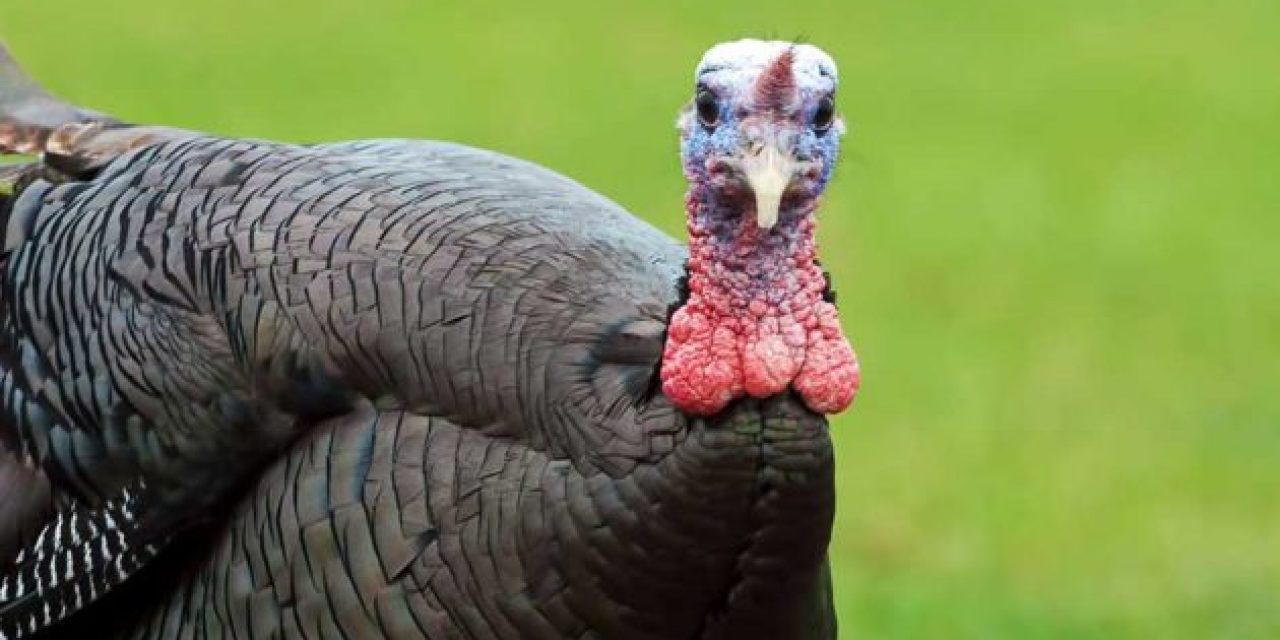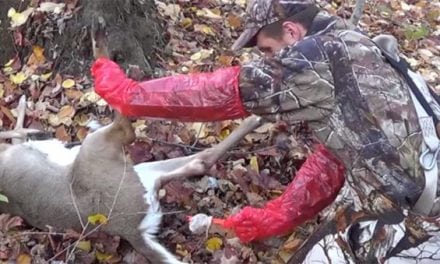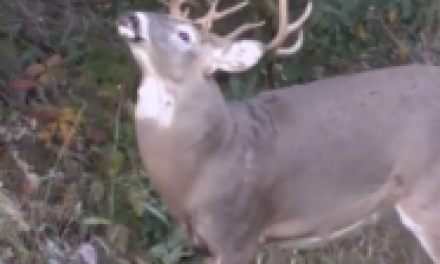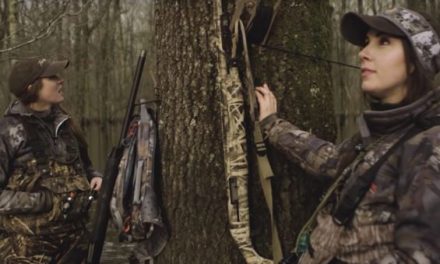
How much do we know about turkey vision?
My first time turkey hunting I was sitting in a blind in the middle of a field between my dad and my uncle. Peering out from the little fabric hut, I was easing the barrel of the shotgun out through the small opening.
“Don’t move, he’s looking,” my dad whispered.
All I knew then was that wild turkeys have really good eyesight. So I held my breath and didn’t even move my eyes for fear the gobbler would see me. Later I would wonder how he could see the tiniest movement from across a field, but didn’t seem to notice the blind or the pipe smoke coming out the top of it.
Birds, in general, have a good reputation for vision. We’ve probably all heard the phrase “eyes like a hawk” used to describe someone with sharp eyesight. And an owl proves its incredible night vision when it picks up a mouse in pitch darkness. But what about turkeys? How much do we know about turkey vision?
When that gobbler looked in our direction, what was he actually seeing?
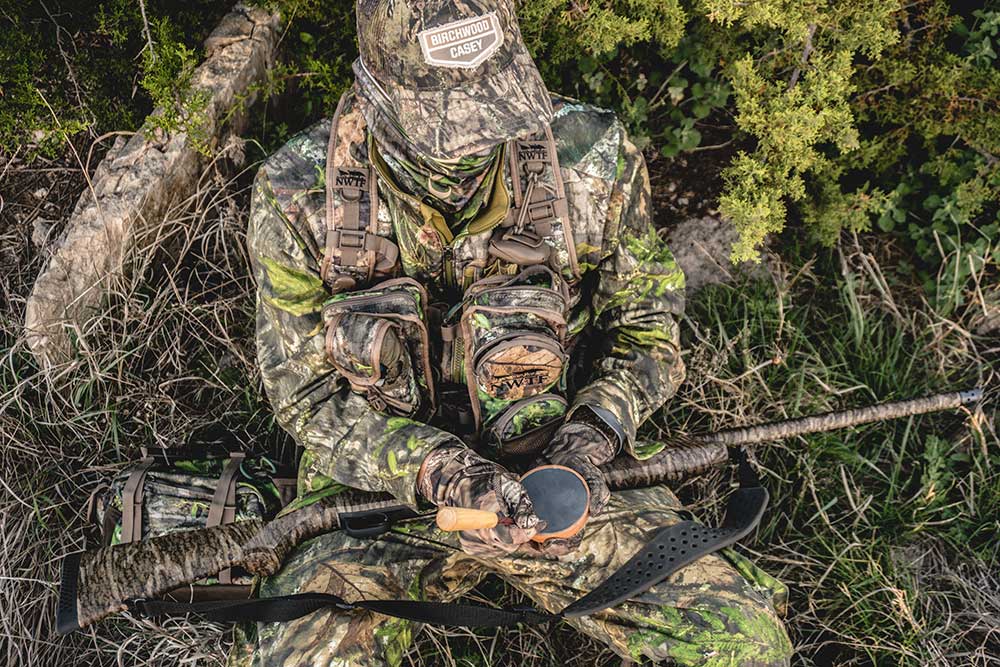
The first thing you notice when you look at a turkey’s eyes is that they are located on either side of its head. Like most prey animals, being able to keep a lookout is more important than depth perception.
This gives turkeys a wide field of vision: About 270 degrees, compared to our 180-degree field of view.
The drawback is that they don’t see depth very well. This is called monocular vision. When a turkey is bobbing his head around, it’s because it is trying to get a better feel for how close something is.
However, unlike some other prey animals, turkeys do have some extra advantages built into their eyes. While other animals, like deer, have limited color vision, turkeys actually see color very well.
Color is perceived through the use of structures in the eye called rods and cones. Humans have one rod and three single cones, totaling four different kinds of photoreceptors. As a result, we see color pretty well.
Turkeys, however, have seven different kinds of photoreceptors: one rod, four single cones, and two double cones. This allows them to see a broader spectrum of colors, and even see UVA light.
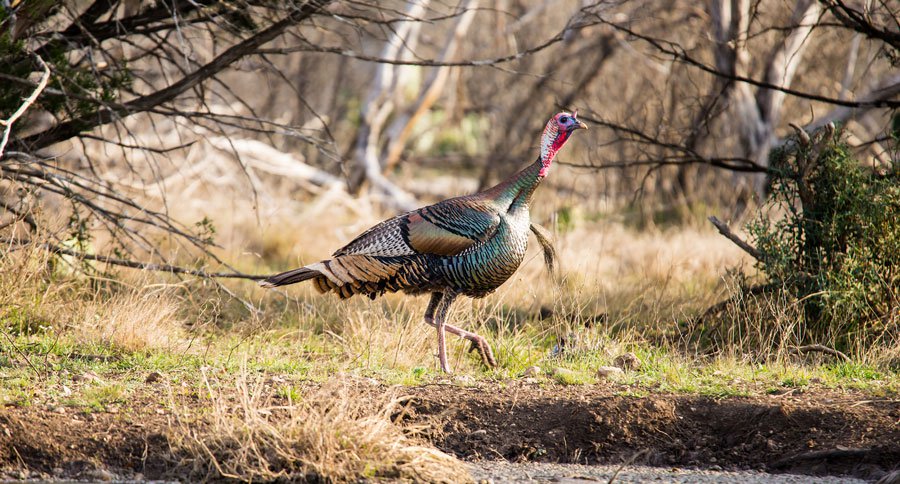
What this means is that in addition to being able to see color better than us, they can also see in the ultraviolet spectrum.
This begs the question: If I want to see how a turkey sees, should I just shine a blacklight over my clothes to see if they glow?
The answer to that is a little complicated. You see, certain substances contain phosphors. Phosphors glow in the presence of UVA light, such as that emitted by a blacklight. So when you look at an object under a blacklight and it seems to glow, the phosphors are glowing because you are giving them a high dose of UVA radiation (not to be confused with harmful UVB radiation, so don’t panic).
So if there is enough naturally occurring UVA light then yes, the turkeys probably see a bit of a glow.
Certain detergents contain phosphors, but if you really want to see something light up shine a light on some tonic water. It really shines! Yet another reason to not have cocktail hour in the woods.
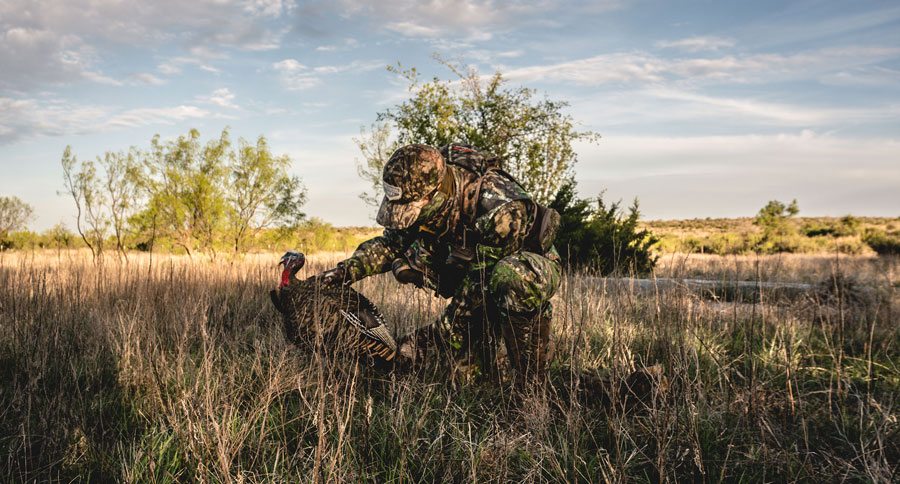
Turkeys seeing in color also creates another problem. Won’t my blaze orange stick out like a sore thumb?
It’s possible, but many prey animals focus more on patterns than color. Vision is a complex system, and eye structure only makes up half of it. The way the brain translates those signals makes a huge difference.
A turkey doesn’t necessarily see a spot of orange and think “Aha! There’s a bunch of turkey hunters!” (even if it feels like that sometimes) especially if they see other things in nature that are orange that they don’t see as a threat, like tiger lilies or fall foliage.
Differences in pattern and movement are usually what signal to a turkey that there is a natural predator nearby, so that’s what their brains are geared toward detecting.
Supposedly they can see about three times sharper than a person with 20/20 vision and about eight times further away. So investing in a good pattern that isn’t fuzzy may make a real difference.
As for movement, you’ll just have to hold really still!
NEXT: WITH THESE NEW RULES, COLORADO SHED HUNTING IS ABOUT TO CHANGE
WATCH
The post Turkey Vision: How a Gobbler Sees appeared first on Wide Open Spaces.

